
Cycle Law support Emma Snowsill’s recent plea to motorists.
We, just like Emma Snowsill, are pleading with motorists to make our roads safer for cyclists. It is time to stop hating on cyclists!
Cyclists are people. They have families. They are Mums... they are Dads. They are husbands… they are wives. They have brothers… they have sisters.
And they have rights! They have a right to be on our roads. And they have a right to feel safe.
CycleLaw stand in support of all cyclists. We support their rights and we are here to help them exercise their legal entitlements.
We urge all road users to think about how their actions on the road can have significant and lasting effects on the lives of cyclists and their loved ones.
Drive safe. Share the road. Respect. Simple!
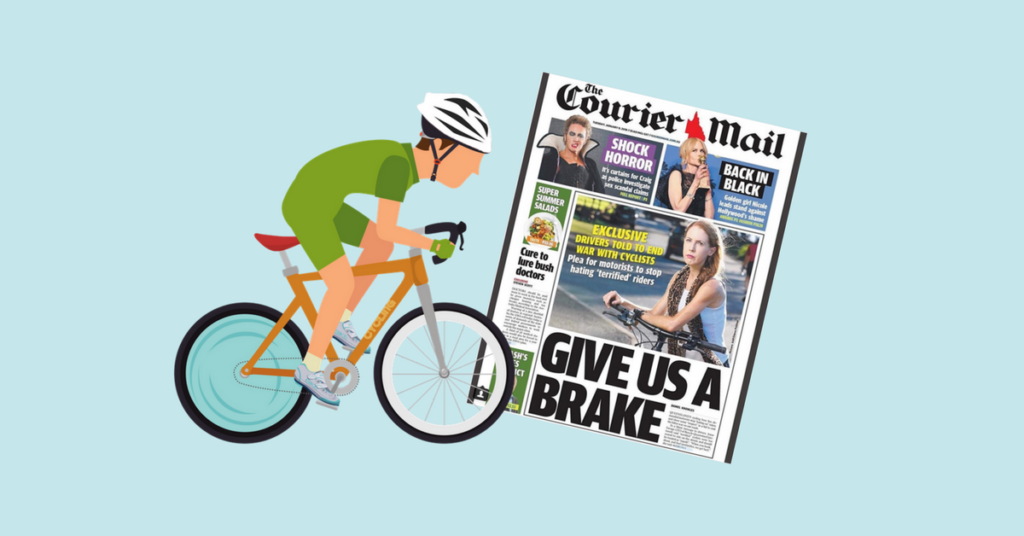
Cycle Law wishes to support the recent Bicycle Queensland white helmet campaign.
We, just like Bicycle Queensland, are pleading with Queenslanders to make our roads safer.
The recent and hotly debated discussions around road user responsibility have given us an opportunity to bring to light the issues facing cyclists on the road. All road users (including cyclists) have a mutual obligation to others on road.
With that said, we wish to remind motorists that failing to give cyclists safe passage is illegal. Whether you are approaching them from behind, attempting to get around them or turning directly in front of them, they require at least 1 metre of space.
Too many people have died on Queensland roads and there are too many accidents where cyclists have suffered injury or damage to their property.
The damage goes beyond collisions, stories of near misses are frequently told by our clients. These incidents can cause significant mental harm to cyclist too.
It is the reality that often these injuries are a result of a lack of care by motorists.
It is not just motorists that present a risk to cyclists safety. Other road users such as local councils or road authorities, who fail to repair known defects in roads, and pedestrians, who have no awareness of their own safety, place cyclists at a greater risk of harm.
Cycle Law is here to support cyclists exercising their legal entitlements by enforcing the laws created to protect them and their property from harm.
Cycle Law urges all road users to think of the consequences of their failure to exercise a duty of care to cyclists. After all, they are people too.
To read more on this story or on Bicycle Queensland’s campaign, read the Facebook post here or the article published by the Courier Mail here.
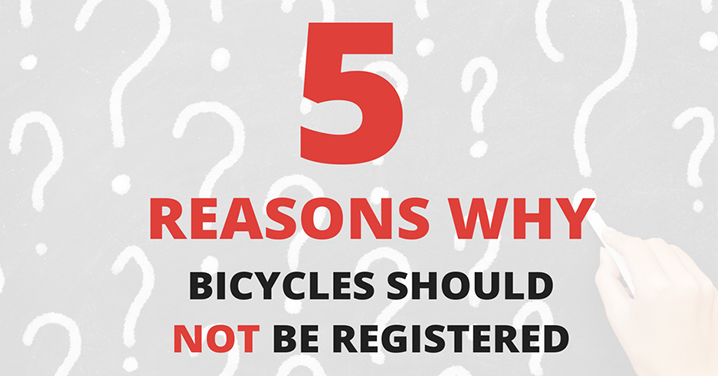
Hopping on his bike for his ride home, Jeff had decided to head home a little earlier than usual on Thursday in an effort to beat the usual peak-hour traffic. Little did he know that this would sadly be his last, as a Sydney bus would strike him at a busy road crossing in Neutral Bay.
This horrific accident would result in the re-ignition of the age-old debate as to whether bicycles should be licensed, this time in parliament. This is not uncommon. Every time a news report to do with bicycles is published, the push for bicycle registrations begins – even when it is often not the cyclist at fault.
Various articles and studies published by regulatory bodies and road safety experts from all over the world conclude that bicycle registration is not an effective way to generate funding for roads or to increase road safety.
Here are the five reasons why bicycle registrations should not be registered:
- Car registration does not “pay for the roads”.
There is a common misconception that motorists pay for building and maintaining roads through fees such as vehicle registration and licenses. Roads are actually funded through general taxation – as taxpayers, we all pay for them. Further, urban/suburban roads – those most commonly used by cyclists – are maintained by local councils. When a cyclist is riding locally, chances are their rent or rates payments help fund the road they’re on.
- The expense of implementing a bicycle registration scheme would outweigh any benefits.
A New South Wales government report prepared by the Sustainable Transport Manager says the annual cost for a driver’s licence covers the administrative costs of issuing that license only. Unless bicycle registration fees were considerably more expensive than car license fees (which is not likely), administration costs would guzzle up any potential revenue raised. And if the costs blew out, the funds would need to come out of everyone’s pockets – not just bike riders.This view is not unique to New South Wales. Bicycle registration has been considered across the globe, and the cost of the concept has consistently been found to outweigh any potential benefits. For example, in Ottawa, Canada it was estimated that a bicycle registration program would cost $100,000 a year, but only bring in $40,000 in revenue.
- Registration would discourage people from cycling.
One of the benefits of cycling is that it is a mode of transportation accessible to all, whether young or old. Sure, keen cyclists would likely register their bikes and continue to cycle. But would casual riders bother to sign up?If Sunday family bike rides or participation in initiatives such as Ride2Work Day and charity rides involved registering and paying a fee, many people would likely miss out on discovering the advantages of bike riding.From a public health perspective, it’s a nightmare as it add yet another barrier to Australian’s getting enough physical activity.
- No nation in the world has bike registration.At least not with number plates and significant fees. A recent literature review conducted for the Roads and Traffic Authority of New South Wales found that bicycle registration schemes have been trialled and ditched in a number of communities – often because it is too difficult and expensive to regulate. Recently in Houston, the law requiring cyclists to register their bicycle was abolished. It was found that out of the thousands of bicycles being used within the city, only about 100 were actually registered.
- Registering bicycles won’t fix the problem.
Other countries are leaps and bounds ahead of Australia when it comes to cycling, which suggests the real problem lies with our road culture. Getting more people in the saddle and cycling on our roads will increase awareness and bring added safety and acceptance – a goal we should all work towards.
Fun fact: Bicycles have existed for more than a century – longer than cars. Did you know that bicycle registration was debated in Australia in the 1930s, and knocked back? Perhaps, motorists need to become more accommodating of their two-wheeled comrades.
Written by Claire McHardy | Solicitor
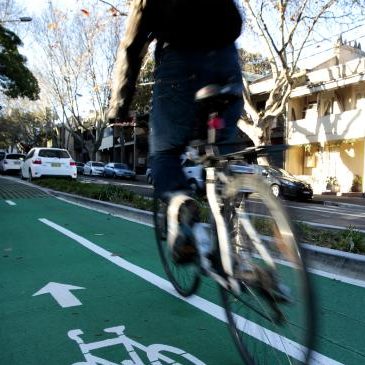
Unfortunately, unprotected bike routes and footpath cycling are the only options available to many Brisbane CBD workers – neither of which are attractive options to some cyclists during peak hour traffic.
Bicycle groups have identified the last 500 meters from established bikeways to work locations as the greatest problem areas and are campaigning for a safer alternative options.
Brisbane Central Business District Bicycle Users Group and Space For Cycling Brisbane have submitted a concept plan which they say will provide a protected bicycle lane within less than two blocks from every business within the CBD.
The type of lanes they propose to install are separated from car traffic by small plastic or cement barriers separating cyclists and cars, similar to the lanes that already exist on George Street.
The proposed grid includes lanes on the north-west side of Ann Street, the north-east side of Edward Street, the south-east side of Margaret Street and the north-east side of George Street linking it to the existing lane.The proposal also includes a lane on Herschel Street to link the grid to the riverside bikeway.
Queensland’s peak body for cycling, Bicycle Queensland, support the concept.
If installed, the bike lanes would bring Brisbane into line with other world cities including New York, London, Paris, and Sydney. In New York, the Department of Transport found that in the streets that had been installed with protected bike lanes, there was a 26% decrease in injuries.
Transport for NSW recently analysed the effectiveness of the bike lanes installed in central Sydney, and found that since the protected lanes were installed, the number of reported injuries had been halved on the sections of road where separated cycle ways existed, even though the number of cyclists using them has doubled.
Written by Emily Billiau and Claire McHardy

Cycling has become so popular across Queensland that the State Government are starting to utilise data from GPS enabled smartphones to plan their infrastructure.
The Palaszczuk Government has recognised the increased popularity of cycling, and has committed to investing more than $162 million into high-priority cycle infrastructure over the next four years. Over $84 million of that investment will be spent on cycle infrastructure on the state-controlled network.
At this stage, the funding is intended to go towards more than 30 cycling infrastructure projects.
A two year action plan is set to be released, followed by a ten-year proposal, with some of the funded projects to include:
- Veloway 1 from O’Keefe Street, Woolloongabba to Lewisham Street, Greenslopes in Brisbane
- North Brisbane Bikeway from Bowen Hills to Wooloowin
- Cycling facilities along sections of the New England Highway and Ruthven Street in Toowoomba
- Bohle River Bridge cycling facilities, and improvements to North Ward Road cycling facilities in Townsville
- Bike lanes along sections of David Low Way and Nicklin Way on the Sunshine Coast
- Bike lanes along sections of Southport-Nerang Road from Wardoo Street to Moora Street, and the Lake Intrepid Bridge Cycleway in the Gold Coast
The next big project, a segregated bikeway along Stanley Street from the Gabba Oval to the Goodwill Bridge stretching 1.2 kilometres, is set to begin construction in early 2017.
Earlier this year, Main Roads Minister Mark Bailey said the Government was using data from Strava (which gathers data from a smartphone’s GPS function) to track bike trends, allowing expenditure to be targeted to those areas.
“We’ve got to know where cyclists are to so that we can put expenditure where it’s most needed” he said.
“We’ve got to keep building cycle paths where they maximise the network benefits and so that people can get to places really easily, so the more off-road dedicated cycleways we get the better.”
Bailey says the aim is to maximise the benefits of the cycling network by continuing to build off-road dedicated cycleways, so that cyclists can get from place to place.
Written by Emily Billiau and Claire McHardy

Changes to Queensland’s compulsory third party (CTP) insurance system are on the horizon, as figures show insurance companies are raking in impressive “super profits” every year.
Queensland operates a common law ‘fault’ based CTP scheme, which provides motor vehicle owners, drivers, passengers and other insured persons with an insurance policy that covers their liability for personal injury caused by, through or in connection with the use of the insured motor vehicle in incidents to which the Motor Accident Insurance Act 1994 (MAIA) applies. The CTP insurance is integrated as a compulsory condition of motor vehicle registration in Queensland.
For the injured third party, it provides access to common law rights, whereby the injured person has a right to seek monetary compensation from the person ‘at fault’ for the personal injury sustained and associated losses. As a fault based scheme it requires proof of liability, meaning the injured person must be able to establish fault (either wholly or partly) as against an owner or driver of a motor vehicle.
The scheme, worth $1.4 billion in annual premiums, is regulated by the Motor Accident and Insurance Commission (MAIC). CTP insurers set their own premium rates every quarter, within the limits set by the MAIC.
It is understood and accepted by the Regulator that insurers are entitled to expect a fair and reasonable profit for the financial risks they bear so that the market remains sustainable and competitive.
According to the MAIC, the system was designed so insurers have an 8 per cent profit “allowance” in premiums. However, independent estimates reported by the regulator show that over the last five years, insurer profit is in the range of 25 per cent to 31 per cent. The gap between the two figures is called a “super profit”.
Queensland lawyers are concerned that insurance companies are making too much profit through the CTP scheme, raking in super profits estimated to be between 3 and 4 times greater than intended by the scheme design.
However, insurers say that profitability statistics from prior years do not indicate their future CTP Scheme performance and maintain that their pricing decisions have to take into account the risk of future adverse events.
Figures show that NRMA, QBE, Allianz, and Suncorp are pocketing a 19 cent profit in each green slip dollar – more than double what the companies predicted when setting their prices.
The MAIC is currently reviewing the Queensland CTP Scheme with an aim to improve its affordability, efficiency and fairness. The MAIC has identified the lack of price competition and strong insurer profitability as key issues.
As part of its review, the regulator has released a discussion paper and called for community and industry feedback.
In a submission to the MAIC, the Australian Lawyers Alliance said: “the biggest issue currently facing the scheme is the unsustainable profit levels of the private insurers” and encouraged the regulator to “act to adjust the operation of the scheme to bring these profits into line with community expectations.”
Written by Emily Billiau and Claire McHardy
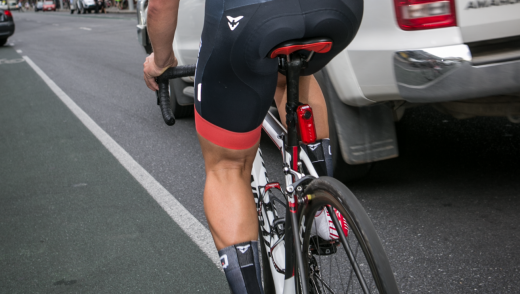
On-bike cameras have become increasingly popular among cyclists in recent years for their ability to provide high-tech evidence in what can sometimes be an ugly contest between road users.
Many cyclists are making the decision to invest in a camera, and turning to the footage as reliable evidence following an accident.
Video footage of a road rage incident, a driver who fails to give way or a pedestrian not paying attention can help a cyclist establish fault on the part of the other party.
And with footage of hair-raising conflicts, crashes and near-crashes from on-bike cameras now a common feature on news websites and social media, it is not difficult to see why so many cyclists are using on-bike cameras as a form of insurance.
Despite the Transport, Housing and Local Government committee’s recent inquiry in to the interaction between cyclists and other road users finding that the majority of cyclists and motorists are courteous and compliant with the road rules, the volume of recent viral videos of incidents demonstrates a need for the added safety measure.
Cyclists are inherently more vulnerable than motorists due to the lack of protection offered by a bicycle and because they are frequently in close proximity to larger and faster motorised vehicles.
Unfortunately, this means that the stakes are significantly higher for cyclists – a crash between a bicycle and a car could send the cyclist to the hospital, and the driver to the panel-beater.
In Australia, drivers often escape criminal charges because the elements and standard of proof required to successfully bring criminal charges against the driver are often not met because of a lack of evidence.
In personal injury claims, liability is often clouded by memory issues, alternative versions of the event or a lack of cooperation – all of which could possibly be alleviated by reliable video footage of the incident.
Cameras can also serve as a deterrent to hit and runs, road rage, and perhaps even prompt drivers to reassess their driving strategies near cyclists.
The need for greater protection of bike riders in Queensland is well-established. With a significant growth anticipated in cycling in the coming years, any additional safety mechanisms ought to be welcomed.
Perhaps one day, setting up an on-bike camera before a ride will become as common to a cyclist’s routine as checking tyre pressure, filling a water bottle and fastening a helmet.
However, health experts are warning Queensland riders to carefully consider where they secure their camera as they may affect injuries in the event of a crash.
Written by Emily Billiau and Claire McHardy
Image source: Michael O’Reilly
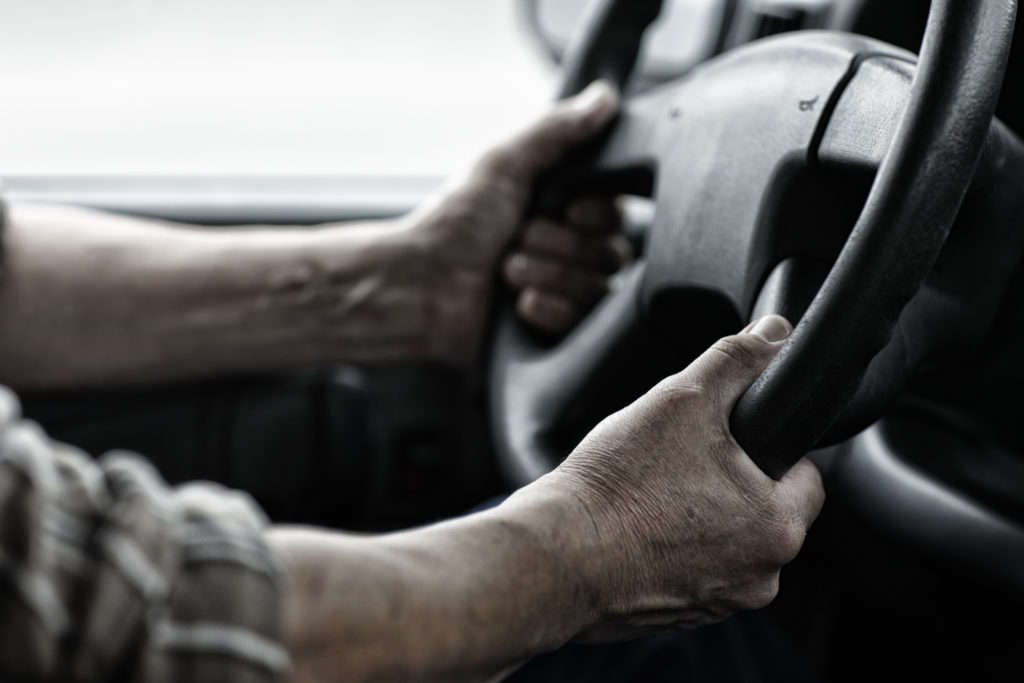
Brazen truck driver to be investigated after posting dangerous driving on social media
A Sydney truck driver would be regretting his decision to upload a video of him deliberately drenching a group of cyclists. One of the cyclists identified in the video onforwarded the footage to police after it became the centre of a heated debate between truck drivers and cyclists.
The video, allegedly filmed by the driver himself shows him driving alongside a group of cyclists and lamenting he is unable to run them over, “So we hate pushbikes, we are not allowed to run them over but we can f*** with them, so let’s have a crack.” He then proceeds to deliberately pass the cyclists at a large puddle which ensured his heavy vehicle threw a large volume of water across the group. The ensuing chuckles indicate just how much pleasure the driver took from his dangerous actions as he laughs, “Oh yeah, nothing better than f***ing saturating a pushbike rider …“My day is complete.”
New South Wales Police have confirmed the truck driver is to appear in court on charges related to using a mobile phone whilst driving and menacing cyclists on the road.
Written by Emily Billiau and Claire McHardy

Is it mandatory to wear a helmet when riding a bicycle?
In short, yes. Australia was one of the first countries to make wearing bicycle helmets mandatory. Between 1990 and 1992, the States and Territories introduced various laws mandating that cyclists wear bicycle helmets while riding.
The Legislation
Although each of the eight State and Territories in Australia have their own Road Transport legislation (or ‘Road Rules’), due to an absence of Commonwealth power to legislate in that area, the Australian Road Rules (developed by the National Transport Commission) stand as a model set of rules for the States and Territories to base their own legislation on. This helps to create uniformity across the various jurisdictions.
Section 256(1) of the National Transport Commission (Road Transport Legislation – Australian Road Rules) Regulations 2006 (Cth) provides that:-
The rider of a bicycle must wear an approved bicycle helmet securely fitted and fastened to the rider’s head, unless the rider is exempt from wearing a bicycle helmet under another law of this jurisdiction.
Each State and Territory has subsequently enacted their own Road Transport legislation that mimics the above national rules. Victoria was the first State to introduce mandatory helmet laws in 1990, followed by New South Wales (for adult cyclists) and Tasmania (all ages). New South Wales amended the laws to include children in 1991. Similar laws covering all cyclists were also adopted in South Australia and Queensland, then in the Northern Territory and Western Australia and finally, the Australian Capital Territory in 1992.
Are there any exceptions?
In 1994, the Northern Territory Minister for Transport announced an amendment to the Northern Territory Traffic Regulations to permit cyclists over the age of 17 to ride without a helmet but only along footpaths or on cycle paths which are not on roads. Reportedly, the compromise to continue to require cyclists to wear helmets while cycling on the road was to avoid any repercussions from the Federal Government.
The position in the Northern Territory is unique and sets it apart from the other States and Territories.
By Emily Billiau
Image credit: Nic MacBean
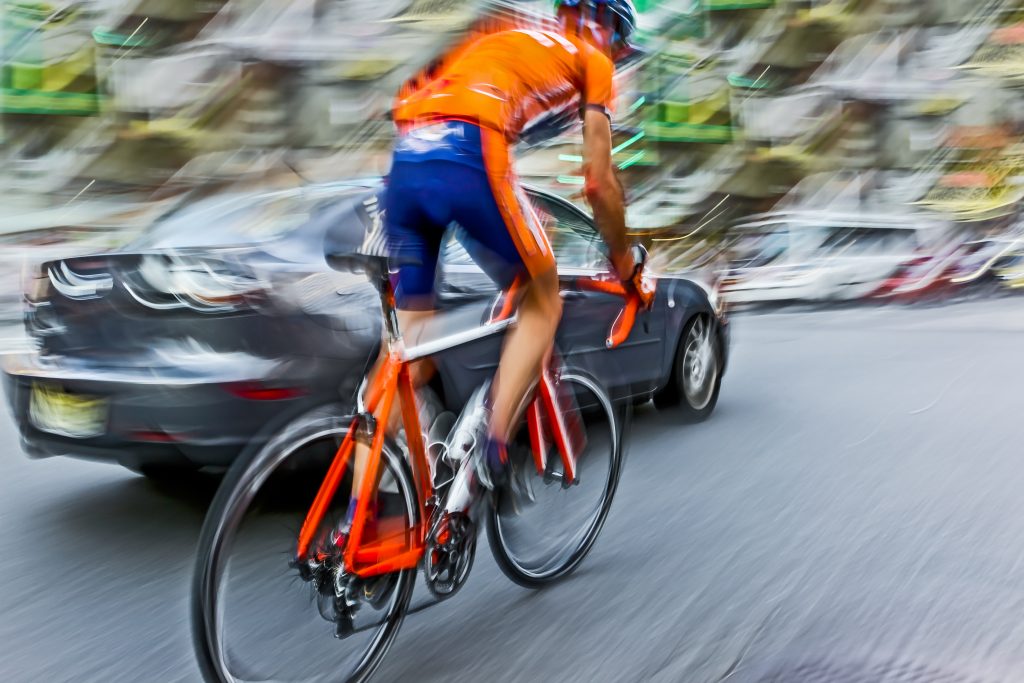
It’s something that thousands of cyclists all over Australia do every day. It generally goes ignored.
But for Victorian cyclist, Laurie Duncan, it was costly.
Mr Duncan was slapped with a $152 fine for passing on the left of a stationery vehicle in Melbourne’s CBD earlier this year.
Mr Duncan said the car was stationery at a busy intersection in the CBD (the corner of Swanston Street and Flinders Lane). He said that the vehicle’s left-turn indicator was on, but the vehicle was stationery waiting for a pedestrians to traverse/cross in front of it. Mr Duncan alleges that it was unsafe to pass the vehicle on the right.
Pursuant to the Victoria’s Road Safety Road Rules 2009 (regulation 141 (2)), the “rider of a bicycle must not ride past, or overtake, to the left of a vehicle that is turning left and is giving a left change of direction signal”. There is an equivalent road rule in similar terms which applies to Queensland cyclists.
It was not disputed that the vehicle had it’s left indicator engaged – the issue was whether the stationary car was in the process of turning left within the meaning of the regulation. Mr Duncan was of the view that it ‘turning left’, as it was stationery at the time he passed it.
Ultimately, the matter turned on the Magistrate’s interpretation of the meaning of ‘turning’. On one view of it, turning is a process involving a series of actions, and when one of those actions stops, the vehicle is no longer in the act of turning. Unfortunately for Mr Duncan, the Magistrate did not interpret the regulation in this way.
The Magistrate upheld Mr Duncan’s fine, finding that he had passed to the left of a vehicle which that was turning left.
“Road rules are designed to ensure the safety of all road users, including cyclists. It seems that even though Mr Duncan thought he was cycling safely and operating within the rules, interpretation worked against him,” CycleLaw solicitor Emily Billiau said.
“It is possible that Queensland police officers may apply a similar road rule strictly here in Queensland, which could see many cyclists face fines. It is something Queensland cyclists need to be alert to.”
By Claire McHardy | (07) 3231 0425 | [email protected]










